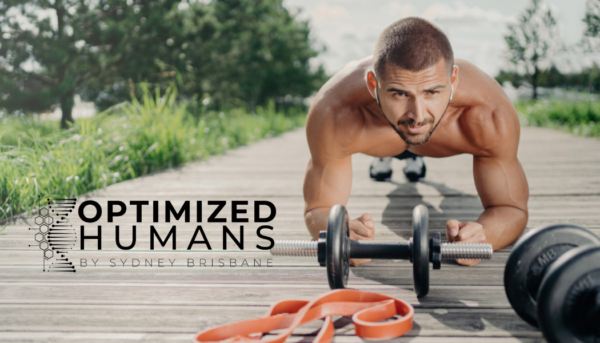As summer sets in, taking your workouts outdoors can be an invigorating way to enjoy the season while staying fit. Whether you’re running through the park, cycling along scenic routes, or practicing yoga on the beach, outdoor exercises offer a refreshing change from the gym. The Optimized Humans program is designed to help you make the most of your outdoor workouts, providing personalized guidance, tracking progress, and offering tips for various environments. Here’s how you can optimize your training with our program.
Benefits of Outdoor Workouts
Outdoor workouts come with numerous benefits that can enhance both your physical and mental well-being:
- Fresh Air and Sunshine: Exercising outdoors exposes you to fresh air and natural light, boosting your mood and providing essential vitamin D.
- Varied Terrain: Running or cycling on varied terrain can challenge your muscles differently, improving strength and endurance.
- Mental Health Boost: Nature has a calming effect, reducing stress and anxiety, and improving overall mental health.
- Engagement and Fun: Outdoor workouts can be more engaging and fun, keeping you motivated and helping you stick to your fitness routine.
Tips for Outdoor Exercises
To get the most out of your outdoor workouts, consider these tips:
- Plan Your Route: Choose safe and scenic routes for running, cycling, or walking. Familiarize yourself with the area and ensure it’s suitable for your fitness level.
- Dress Appropriately: Wear moisture-wicking clothing to keep cool and comfortable. Don’t forget a hat and sunglasses to protect yourself from the sun.
- Stay Hydrated: Bring water with you and take regular breaks to stay hydrated, especially during intense activities.
- Warm Up and Cool Down: Begin with a dynamic warm-up to prepare your muscles and end with a cool-down to prevent stiffness and soreness.
- Be Weather Aware: Check the weather forecast and plan your workouts accordingly. Avoid extreme heat and be prepared for sudden weather changes.
Optimized Humans: Your Outdoor Workout Companion
The Optimized Humans app is your ultimate companion for outdoor workouts, offering features that guide and track your progress in various environments:
- Personalized Workout Plans: The app creates customized workout plans based on your fitness goals, whether you’re focusing on cardio, strength, flexibility, or a combination of all three.
- GPS Tracking: Track your runs, walks, and cycling routes with GPS. The app logs distance, speed, and elevation, giving you detailed insights into your performance.
- Voice Coaching: Receive real-time coaching cues to keep you motivated and ensure you’re maintaining proper form. Voice coaching can also remind you to hydrate and take breaks.
- Progress Monitoring: Monitor your progress with detailed statistics and performance summaries. The app tracks your improvements and adjusts your workout plans accordingly.
- Community Challenges: Join community challenges and compete with other users. This adds a fun, social element to your workouts, keeping you motivated and accountable.
Outdoor Workout Ideas
Here are some outdoor workout ideas to try with the guidance of the Optimized Humans app:
- Running and Jogging: Use the app’s GPS tracking and voice coaching features to improve your running technique and endurance. Set goals for distance, time, or pace and track your progress.
- Cycling: Plan scenic cycling routes and monitor your speed, distance, and elevation. The app provides personalized cycling workouts to help you build strength and stamina.
- Bodyweight Exercises: Perform bodyweight exercises like push-ups, squats, lunges, and planks in your backyard or a local park. The app offers guided routines and ensures you’re performing each move correctly.
- HIIT Workouts: High-Intensity Interval Training (HIIT) can be done anywhere. Follow the app’s HIIT workouts that combine short bursts of intense exercise with periods of rest or low-intensity activity.
- Yoga and Stretching: Practice yoga and stretching routines on the beach, in a park, or in your backyard. The app provides guided sessions to improve flexibility and relaxation.
Conclusion
Optimizing your outdoor workouts with the Optimized Humans app ensures you stay fit, motivated, and engaged all summer long. By following personalized workout plans, tracking your progress, and utilizing the app’s features, you can enjoy the benefits of outdoor exercises while achieving your fitness goals. Embrace the great outdoors, breathe in the fresh air, and let the Optimized Humans program guide you to a healthier, happier you. Download the app today and take your workouts to the next level, wherever your adventures take you.
Exclusive OFFER For YOU!
Unlock your potential with a complimentary 14-day trial of our #OptimizedHumans program! 🚀 Dive into customized workouts, expert guidance, and transformative resources designed to enhance your physical and mental well-being. 💪 Join hands with Sydney and our dedicated team to embark on a personalized fitness journey tailored just for you. Together, we’ll optimize your health and set you on the path to success. Plus, discover how we collaborate with companies to boost employee efficiency through tailored workout and nutrition plans. Don’t wait any longer—start your journey to optimal living today at optimizedhumans.life!
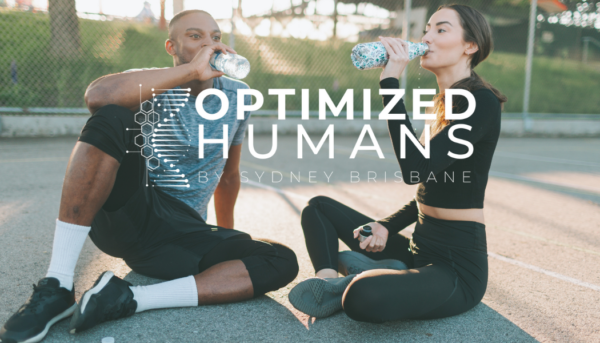
As the summer sun blazes, your workouts might feel more intense, and your body will undoubtedly work harder. Proper post-workout recovery becomes even more crucial during hot weather to ensure your body recovers efficiently and remains injury-free. The Optimized Humans program offers expert advice and resources to help you optimize your recovery. Here are the best practices for post-workout recovery in hot weather, including stretching routines and nutrition tips available in our program.
Hydration is Key
One of the most important aspects of recovery, especially in hot weather, is staying hydrated. Your body loses more fluids through sweat, so replenishing these is essential.
1. Rehydrate Immediately: Drink plenty of water immediately after your workout. Aim for at least 16-24 ounces of water within the first 30 minutes post-exercise.
2. Electrolyte Balance: Consuming drinks with electrolytes can help replenish lost salts and minerals. Consider coconut water or specially formulated electrolyte drinks.
3. Monitor Your Hydration: Check the color of your urine; a pale yellow indicates proper hydration, while darker urine suggests you need to drink more fluids.
Effective Cooling Down
Cooling down helps bring your heart rate back to normal and prevents muscle stiffness. The Optimized Humans program offers guided cool-down routines to ensure you recover properly.
1. Gradual Cool-Down: Spend at least 5-10 minutes walking or performing low-intensity movements to gradually reduce your heart rate.
2. Static Stretching: Incorporate static stretches targeting the major muscle groups you worked during your exercise. Hold each stretch for 20-30 seconds to improve flexibility and reduce muscle tension.
3. Deep Breathing: Practice deep breathing exercises to promote relaxation and aid in the recovery process. This helps lower your heart rate and can reduce post-workout stress.
Stretching Routines for Optimal Recovery
Stretching is a crucial part of the recovery process, especially after intense workouts in hot weather. The Optimized Humans app includes comprehensive stretching routines designed to enhance recovery.
1. Full-Body Stretch Routine: Focus on a full-body stretching routine that targets all major muscle groups. This can help improve flexibility, reduce muscle soreness, and prevent injuries.
2. Yoga and Mobility Work: Incorporate yoga and mobility exercises to enhance your recovery. These practices help improve joint mobility, reduce muscle stiffness, and promote relaxation.
3. Foam Rolling: Use a foam roller to release muscle tension and improve blood flow to your muscles. The app provides guided foam rolling exercises for different muscle groups.
Nutrition for Recovery
What you eat after your workout plays a significant role in your recovery. The Optimized Humans program offers personalized nutrition plans to help you refuel and repair your body.
1. Protein Intake: Consume a protein-rich snack or meal within 30-60 minutes post-workout to support muscle repair and growth. Options include protein shakes, Greek yogurt, or a turkey sandwich.
2. Carbohydrates for Energy: Pair your protein with carbohydrates to replenish glycogen stores and provide energy for recovery. Good options include fruits, whole grains, and vegetables.
3. Healthy Fats: Include healthy fats in your post-workout meal to support overall recovery and reduce inflammation. Avocados, nuts, and olive oil are excellent choices.
4. Antioxidant-Rich Foods: Consume foods rich in antioxidants to combat oxidative stress caused by intense exercise. Berries, leafy greens, and nuts are great options.
Rest and Sleep
Adequate rest and quality sleep are essential for optimal recovery. The Optimized Humans program provides tips and techniques to improve your sleep hygiene.
1. Prioritize Sleep: Aim for 7-9 hours of sleep each night to allow your body to recover fully. Sleep is when your body repairs muscles, consolidates memory, and releases growth hormones.
2. Create a Relaxing Environment: Ensure your sleep environment is cool, dark, and quiet. Consider using blackout curtains, earplugs, or a white noise machine to enhance sleep quality.
3. Consistent Sleep Schedule: Maintain a consistent sleep schedule by going to bed and waking up at the same time each day, even on weekends.
Conclusion
Recovering properly after workouts, especially in hot weather, is essential to maintain your fitness progress and overall well-being. By following these best practices for hydration, cooling down, stretching, nutrition, and rest, you can optimize your recovery and continue to perform at your best. The Optimized Humans program is here to support you with personalized recovery plans, expert advice, and comprehensive resources. Embrace these recovery techniques to stay healthy, energized, and ready for your next workout, no matter how high the temperature rises.
Exclusive Deal For You!
Unlock your potential with a complimentary 14-day trial of our #OptimizedHumans program! 🚀 Dive into customized workouts, expert guidance, and transformative resources designed to enhance your physical and mental well-being. 💪 Join hands with Sydney and our dedicated team to embark on a personalized fitness journey tailored just for you. Together, we’ll optimize your health and set you on the path to success. Plus, discover how we collaborate with companies to boost employee efficiency through tailored workout and nutrition plans. Don’t wait any longer—start your journey to optimal living today at optimizedhumans.life!

As July ushers in the height of summer, it’s the perfect time to focus on three vital health topics that are particularly relevant this season: sun safety, hydration, and healthy summer eating. By paying attention to these areas, you can ensure a fun, safe, and healthy summer for you and your loved ones.
Sun Safety and Skin Health
Summer means longer days and more sunshine, but it also brings an increased risk of sunburn and skin damage. Protecting your skin from harmful UV rays is essential to prevent issues ranging from painful sunburns to long-term risks like skin cancer.
1. Sunscreen is a Must: Apply a broad-spectrum sunscreen with an SPF of at least 30 every day, even on cloudy days. Reapply every two hours, and more often if you’re swimming or sweating.
2. Protective Clothing: Wear lightweight, long-sleeved shirts, wide-brimmed hats, and UV-blocking sunglasses to cover your skin and eyes. Clothing with a UPF (Ultraviolet Protection Factor) rating offers extra protection.
3. Seek Shade: Avoid direct sunlight during peak hours (10 a.m. to 4 p.m.). If you’re outside, find or create shade with umbrellas, canopies, or trees.
4. Know Your Skin: Regularly check your skin for any changes or new moles. Early detection is crucial for successful treatment of skin cancer. If you notice any suspicious changes, consult a dermatologist promptly.
Taking these steps ensures you can enjoy the sun safely and keep your skin healthy and radiant.
Hydration and Heat-Related Illnesses
High temperatures can quickly lead to dehydration and heat-related illnesses like heat exhaustion and heat stroke. Staying hydrated is crucial for maintaining your health during the hot summer months.
1. Drink Plenty of Water: Aim to drink at least 8-10 glasses of water a day. If you’re active or spending extended periods outside, you may need more. Carry a reusable water bottle with you to make it easy to stay hydrated on the go.
2. Eat Hydrating Foods: Incorporate water-rich foods into your diet, such as cucumbers, watermelon, strawberries, and lettuce. These not only hydrate but also provide essential vitamins and minerals.
3. Avoid Excessive Alcohol and Caffeine: Both can contribute to dehydration. If you do consume these, balance with extra water intake.
4. Recognize the Signs of Dehydration: Symptoms include dry mouth, fatigue, dizziness, and dark urine. If you experience any of these, increase your fluid intake immediately.
5. Stay Cool: Wear lightweight, loose-fitting clothing and take breaks in the shade or air-conditioned environments to prevent overheating.
By keeping these tips in mind, you can stay hydrated and healthy, even during the hottest days of summer.
Healthy Summer Eating
July offers a bounty of fresh, seasonal produce that’s both delicious and nutritious. Embracing these foods can enhance your health and make summer meals a delightful experience.
1. Seasonal Fruits and Vegetables: Take advantage of summer’s fresh produce. Berries, tomatoes, peaches, and leafy greens are at their peak, offering a range of flavors and health benefits. They’re rich in vitamins, antioxidants, and fiber, contributing to overall wellness.
2. Light and Fresh Meals: Opt for lighter meals that are easy to prepare and digest. Salads, smoothies, and grilled vegetables are excellent choices that keep you feeling energized without the heaviness of winter dishes.
3. Healthy Barbecues: If you’re grilling, choose lean proteins like chicken, fish, or plant-based options. Marinate with herbs, spices, and citrus juices instead of sugary sauces. Include plenty of grilled vegetables to add color and nutrients to your plate.
4. Stay Mindful of Portions: Summer gatherings often involve indulgent foods. Enjoy your favorites but be mindful of portion sizes to maintain a balanced diet.
5. Hydrating Beverages: Make your own refreshing drinks with natural ingredients. Infuse water with fruits and herbs, or make iced herbal teas to stay hydrated and avoid sugary sodas.
Embracing the vibrant flavors of summer produce not only enhances your meals but also boosts your health, keeping you refreshed and nourished during the hot months.
By prioritizing sun safety, hydration, and nutritious eating, you can make the most of July’s long days and warm weather. These practices will help you stay healthy, energized, and ready to enjoy all the fun activities that summer has to offer. Remember, taking care of yourself today sets the foundation for a healthier tomorrow. Enjoy your summer, stay safe, and make the most of this wonderful season!
Exclusive Promotion For You!
Unlock your potential with a complimentary 14-day trial of our #OptimizedHumans program! 🚀 Dive into customized workouts, expert guidance, and transformative resources designed to enhance your physical and mental well-being. 💪 Join hands with Sydney and our dedicated team to embark on a personalized fitness journey tailored just for you. Together, we’ll optimize your health and set you on the path to success. Plus, discover how we collaborate with companies to boost employee efficiency through tailored workout and nutrition plans. Don’t wait any longer—start your journey to optimal living today at optimizedhumans.life!
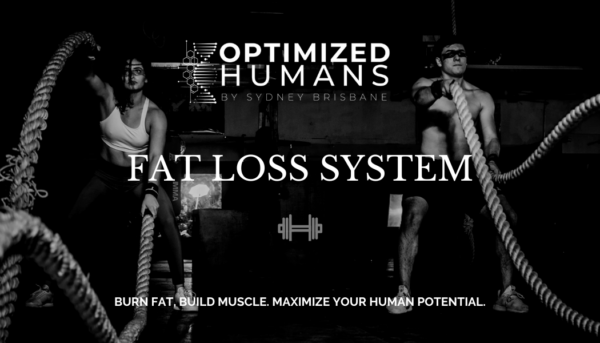
Summer is the perfect time to ramp up your fitness routine, take advantage of the beautiful weather, and work towards your health goals. Whether you’re looking to get in shape, stay active, or try new workouts, the Optimized Humans program offers the tools and guidance you need to maximize your summer fitness routine. Here’s how you can leverage the personalized workouts and features available in the Optimized Humans app to stay fit and motivated all summer long.
Personalized Workouts Tailored to Your Goals
One of the standout features of the Optimized Humans program is the ability to create personalized workout plans tailored to your individual goals. Whether you’re aiming to lose weight, build muscle, improve endurance, or simply maintain your current fitness level, the app offers a variety of workouts designed to meet your specific needs.
1. Customizable Plans: The app allows you to set your fitness goals and preferences, creating a workout plan that fits your schedule and interests. Whether you prefer strength training, cardio, HIIT, or a mix of everything, Optimized Humans has you covered.
2. Adaptive Workouts: The app adjusts your workout intensity based on your progress, ensuring you are continually challenged and making improvements. This adaptive approach helps prevent plateaus and keeps your fitness journey exciting.
3. Variety of Exercises: With a vast library of exercises and routines, you’ll never get bored. From yoga and Pilates to high-intensity interval training and weightlifting, the app offers something for everyone, catering to all fitness levels and interests.
Outdoor and Home Workouts
Summer is the ideal time to take your workouts outdoors. Optimized Humans provides a range of outdoor workout options that can be easily integrated into your fitness routine.
1. Outdoor Fitness Routines: The app features guided outdoor workouts such as running, cycling, and bodyweight exercises that can be performed in parks, beaches, or your backyard. Enjoy the fresh air and sunshine while staying active.
2. Home Workouts: If you prefer working out at home, Optimized Humans offers numerous routines that require minimal to no equipment. These workouts are perfect for days when you want to stay indoors or if you’re traveling and don’t have access to a gym.
3. Location-Based Recommendations: The app can suggest nearby parks, trails, and outdoor fitness spots, making it easier for you to find the perfect location for your workout.
Track Your Progress and Stay Motivated
Staying motivated is key to maintaining a consistent fitness routine, and Optimized Humans provides several features to help you stay on track.
1. Progress Tracking: The app allows you to track your workouts, monitor your progress, and set new goals. Visualizing your improvements can be incredibly motivating and help you stay committed to your fitness journey.
2. Personalized Feedback: Receive real-time feedback and tips from virtual trainers based on your performance. This personalized guidance ensures you’re performing exercises correctly and efficiently.
3. Community Support: Connect with other users through the app’s community features. Share your achievements, participate in challenges, and find workout buddies to keep you motivated and accountable.
Nutrition Guidance and Meal Planning
A well-rounded fitness routine includes not only exercise but also proper nutrition. Optimized Humans offers nutritional guidance and meal planning features to complement your workouts and help you achieve your health goals.
1. Personalized Meal Plans: Based on your dietary preferences and fitness goals, the app provides customized meal plans and recipes to fuel your body with the right nutrients.
2. Nutritional Tracking: Keep track of your daily food intake, monitor your macros, and ensure you’re meeting your nutritional needs. The app makes it easy to stay on top of your diet and make healthier choices.
3. Healthy Summer Recipes: Discover delicious and nutritious summer recipes that are easy to prepare and perfect for the season. From refreshing smoothies to light salads, the app offers a variety of options to keep your diet exciting and wholesome.
Conclusion
Maximizing your summer fitness routine is effortless with the Optimized Humans program. By leveraging the personalized workouts, outdoor and home fitness options, progress tracking, and nutritional guidance, you can stay fit, motivated, and healthy all summer long. Download the Optimized Humans app today and start your journey towards a more active and fulfilling summer. Embrace the season with a renewed focus on your fitness goals and let Optimized Humans be your partner in achieving them.

June, a month dedicated to unleashing the full potential of our brainpower and igniting awareness for Alzheimer’s disease. As we embark on this journey of enlightenment and advocacy, let’s explore how we can channel our collective energy to raise awareness, support research, and empower those affected by Alzheimer’s. Join us as we delve into actionable strategies to make a difference this Alzheimer’s Awareness Month.
Raising Awareness:
Awareness is the first step towards meaningful change. Spread the word about Alzheimer’s disease and its impact on individuals, families, and communities. Share informative resources, personal stories, and advocacy initiatives on social media platforms, in your local community, and among your networks. By raising awareness, we can shine a light on Alzheimer’s and inspire others to join the fight.
Supporting Research:
Research is the cornerstone of progress in the fight against Alzheimer’s. Get involved in fundraising events, volunteer opportunities, and advocacy campaigns to support organizations dedicated to Alzheimer’s research. Your contributions can fund groundbreaking studies, clinical trials, and innovative treatments that bring us closer to a world without Alzheimer’s.
Empowering Those Affected:
Alzheimer’s affects millions of individuals and their loved ones worldwide. Show your support by offering compassion, understanding, and practical assistance to those living with Alzheimer’s and their caregivers. Volunteer at local memory care facilities, participate in support groups, or simply lend a listening ear to someone in need. Your kindness and empathy can make a world of difference in the lives of those affected by Alzheimer’s.
Taking Action for Change:
Action speaks louder than words. Advocate for policy changes, increased funding for Alzheimer’s research, and improved access to care and support services. Write letters to lawmakers, participate in advocacy events, and engage with advocacy organizations to amplify your voice and drive meaningful change at local, national, and global levels.
As we ignite awareness for Alzheimer’s this June, let’s unleash the full power of our brainpower to make a difference. By raising awareness, supporting research, empowering those affected, and taking action for change, we can create a future where Alzheimer’s no longer robs individuals of their memories and dignity. Together, let’s stand united in the fight against Alzheimer’s and ignite a spark of hope for generations to come.
Thank you for taking this journey with us. Hopefully this has made you more aware of the necessity of good health. If you can make an impact throughout Alzheimer’s and Brain Awareness Month and Maximize Your Human Potential!

We are in the third week battling against Alzheimer’s and cognitive decline takes center stage. In this month dedicated to raising awareness, let’s explore how we can harness the power of mind over matter to combat these formidable adversaries. Join us as we dive into effective strategies to preserve cognitive function and champion brain health.
Navigating Alzheimer’s:
Alzheimer’s disease poses a significant challenge to individuals and communities worldwide. However, armed with knowledge and determination, we can navigate this journey with resilience. Explore treatment options such as cognitive enhancers and lifestyle interventions to manage symptoms and enhance quality of life. Additionally, participate in clinical trials to contribute to the advancement of Alzheimer’s research and potential breakthroughs.
Fueling Brain Resilience:
Just as a car needs fuel to run smoothly, our brains require nourishment to function optimally. Adopt a brain-healthy diet rich in nutrients like antioxidants, omega-3 fatty acids, and vitamins B and D. Incorporate foods such as fatty fish, leafy greens, nuts, and berries to support cognitive resilience and protect against age-related cognitive decline.
Empowering Early Detection:
Early detection is critical in the fight against Alzheimer’s and cognitive decline. Embrace the power of blood tests to identify biomarkers associated with brain health and cognitive function. Routine screenings for cholesterol, glucose, and inflammation levels can provide valuable insights and prompt proactive interventions to mitigate risk factors and promote brain resilience.
Insights from Genetic Profiling:
Genetic profiling offers personalized insights into individual susceptibility to Alzheimer’s disease and cognitive decline. By understanding genetic risk factors, individuals can implement targeted interventions to optimize brain health and reduce the likelihood of developing cognitive impairments. Explore lifestyle modifications, including regular exercise, stress management, and cognitive stimulation, to bolster brain resilience and support overall well-being.
Conclusion:
As we embark on June’s battle against Alzheimer’s and cognitive decline, let’s remember that mind over matter can be a powerful force for change. By navigating Alzheimer’s with resilience, fueling brain resilience with a nutrient-rich diet, empowering early detection through blood tests, and gaining insights from genetic profiling, we can tilt the odds in favor of cognitive vitality. Together, let’s embrace the challenge and pave the way for a future where cognitive health flourishes.
Stay tuned for our last actionable insights and tips throughout Alzheimer’s and Brain Awareness Month!
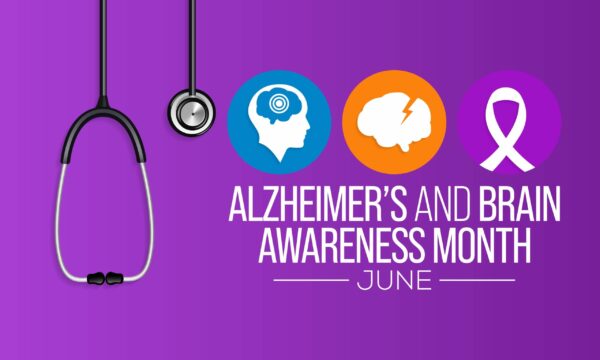
In the midst of June’s fervor for Alzheimer’s awareness, it’s time to recognize that memory matters. This month serves as a rallying cry to join the movement for brain health and take proactive steps to safeguard cognitive function. Let’s delve into practical strategies to champion brain health and honor the importance of memory in our lives.
Prioritizing Brain Health:
Maintaining brain health is crucial for preserving cognitive function and warding off conditions like Alzheimer’s disease. Engage in activities that stimulate the mind, such as puzzles, reading, and learning new skills. Physical exercise is also essential, as it enhances blood flow to the brain and promotes the growth of new brain cells. Make regular exercise a cornerstone of your routine to support long-term brain health.
Nutritional Support for the Brain:
Nutrition plays a pivotal role in brain health. Adopt a brain-boosting diet rich in fruits, vegetables, whole grains, and lean proteins. Incorporate foods high in antioxidants, such as berries, nuts, and leafy greens, to combat oxidative stress and protect brain cells from damage. Additionally, consider supplements like vitamin D and magnesium, which have been linked to improved cognitive function and mood regulation.
Harnessing the Power of Blood Tests:
Blood tests offer a window into our brain health, providing valuable insights for early detection and intervention. Routine blood screenings can assess cholesterol levels, blood sugar levels, and inflammatory markers, which impact brain health. Monitoring these biomarkers allows for timely intervention to mitigate risk factors and optimize brain function.
Insights from Genetic Testing:
Genetic testing empowers individuals to understand their unique risk factors for Alzheimer’s disease. By identifying genetic predispositions early on, individuals can implement personalized strategies to reduce risk and promote brain health. Embrace lifestyle modifications such as maintaining a healthy weight, managing stress, and prioritizing quality sleep to support overall well-being and cognitive vitality.
Conclusion:
As we navigate Alzheimer’s Awareness Month, let’s reaffirm that memory matters. By prioritizing brain health, embracing nutritional support, harnessing the power of blood tests, and gaining insights from genetic testing, we can champion cognitive vitality and honor the importance of memory in our lives. Together, let’s join the movement for brain health and pave the way for a brighter, more resilient future.
Stay tuned for more actionable insights and tips throughout Alzheimer’s and Brain Awareness Month!

As May bids us farewell and the warmth of spring lingers in the air, I’m compelled to reflect on the significance of family, especially as we recently celebrated Mother’s Day—a time to honor the extraordinary women who have shaped our lives with love, wisdom, and unwavering support. In this closing blog for the month of May, let’s delve into the profound impact of family on our well-being, particularly in the realm of anxiety and life choices.
Mother’s Day: A Time for Reflection and Gratitude
Mother’s Day serves as a poignant reminder of the profound influence mothers, grandmothers, and mother figures wield in our lives. Whether through nurturing guidance, boundless love, or quiet strength, these remarkable individuals leave an indelible mark on our hearts and souls. As we honor them on this special day, let’s take a moment to express our deepest gratitude for the countless sacrifices they’ve made and the unwavering support they’ve provided.
The Power of Family: Nurturing Connection and Resilience
Beyond Mother’s Day, let’s explore the broader significance of family in shaping our well-being. Research consistently highlights the importance of strong familial bonds in fostering resilience, mitigating anxiety, and influencing life choices. From childhood through adulthood, the love, support, and sense of belonging that family provides serve as pillars of strength, guiding us through life’s inevitable challenges and triumphs.
Family and Anxiety: A Source of Comfort and Stability
In the realm of mental health, family plays a pivotal role in managing anxiety and promoting emotional well-being. The unconditional love and acceptance of family members create a safe haven where individuals feel heard, understood, and supported. Whether through comforting words, a reassuring embrace, or simply being present in times of need, family offers solace in the face of anxiety, instilling a sense of calm and reassurance.
Life Choices and Family Influence: Shaping Our Paths with Love
Moreover, family influences our life choices in profound ways, guiding us toward paths aligned with our values, aspirations, and passions. The guidance and wisdom imparted by parents and family members shape our beliefs, ambitions, and dreams, influencing the decisions we make and the paths we choose to pursue. Through their encouragement and belief in our potential, family members empower us to embrace our authentic selves and pursue fulfilling endeavors.
Closing Thoughts: Honoring the Heart of Family
As we bid adieu to May and reflect on the significance of Mother’s Day and the power of family, let’s carry the spirit of love, gratitude, and connection forward. Let’s cherish the bonds that unite us, honoring the heart of family and recognizing its profound impact on our well-being and life journey. May we continue to nurture these cherished connections, celebrating the love and support that enrich our lives each day.
Thank you, dear readers, for joining me on this reflective journey. May the lessons learned and the connections forged inspire us to embrace the heart of family with open arms and grateful hearts, today and always.
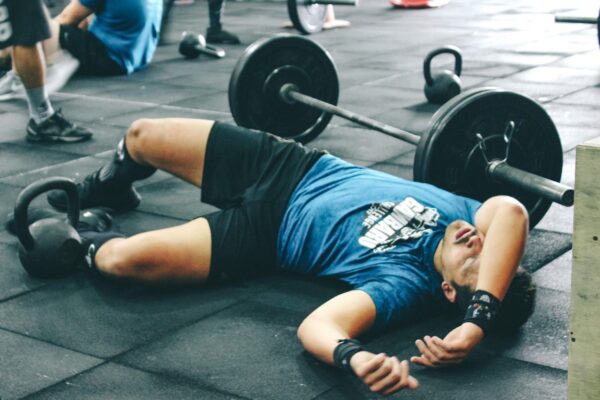
In the ever-evolving landscape of fitness, the pursuit of a healthier lifestyle has transcended the traditional realms of intense workouts. This blog delves into the transformative journey of the fitness industry, highlighting the growing importance of recovery and wellness services. Beyond the sweat-drenched workouts, a new era is emerging—one that embraces a holistic approach to well-being.
Rethinking Fitness: A Holistic Perspective
Gone are the days when fitness was synonymous with grueling workouts and sweat-soaked gym sessions. The evolving mindset of fitness enthusiasts is steering towards a holistic perspective that encompasses physical, mental, and emotional well-being. The realization that recovery is not just a post-workout necessity but a fundamental aspect of a healthy lifestyle is reshaping the fitness narrative.
The Role of Recovery in Performance Enhancement
While challenging workouts remain crucial for physical fitness, the focus is shifting towards what happens after the sweat session. Recovery is now recognized as a key element in performance enhancement. Athletes and fitness enthusiasts are exploring innovative recovery techniques to optimize their training results, reduce the risk of injuries, and promote long-term sustainability in their fitness journeys.
Personalized Recovery Plans
As the understanding of individual variability in recovery needs grows, the fitness industry is moving towards personalized recovery plans. Tailoring recovery strategies to individual preferences, body types, and fitness goals ensures a more targeted and effective approach. From customized recovery nutrition plans to specific recovery modalities, the emphasis is on providing personalized solutions for each individual.
Integration of Technology in Recovery
Technology is playing a significant role in revolutionizing the recovery aspect of fitness. Wearable devices, fitness apps, and smart recovery tools are empowering individuals to track their recovery progress, monitor vital indicators, and make informed decisions about their wellness routines. This integration of technology fosters a more data-driven and efficient approach to recovery.
Recovery Beyond Physical: Mental and Emotional Well-being
The evolution of fitness now acknowledges that well-being goes beyond physical health. Mental and emotional well-being are gaining prominence as essential components of a holistic fitness journey. Practices such as meditation, mindfulness, and stress management are becoming integral to recovery routines, promoting a balanced and resilient mindset.
Holistic Wellness Centers: A Hub for Comprehensive Well-being
The rise of holistic wellness centers signifies a shift from traditional gyms to comprehensive well-being hubs. These centers offer a spectrum of services, including recovery modalities, fitness classes, mental health resources, and nutritional guidance. They provide a one-stop destination for individuals seeking a well-rounded approach to their health and fitness.
Community and Support in Holistic Fitness
The evolving fitness landscape is fostering a sense of community and support. Whether through fitness classes, online forums, or social media groups, individuals are connecting to share their experiences, challenges, and triumphs in their holistic fitness journeys. This sense of community serves as a motivational force, encouraging individuals to prioritize their well-being in a supportive environment.
Paradigms and Transcendents
The evolution of fitness is a dynamic journey that transcends the limitations of traditional workout paradigms. Embracing recovery and wellness services as integral components of a holistic fitness approach paves the way for a more sustainable and fulfilling health journey. Beyond the sweat, fitness enthusiasts are discovering the transformative power of recovery, not just for physical performance but for fostering a balanced and thriving life. The future of fitness is one that goes beyond the gym floor, incorporating recovery and wellness as pillars of a comprehensive and holistic well-being strategy.

In the ever-evolving landscape of fitness, a significant shift has occurred as people increasingly recognize the profound impact of recovery and wellness on their overall well-being. This paradigm shift is not only transforming individual health practices but is also reshaping the very fabric of the fitness industry. From high-intensity workouts to recovery and rejuvenation, the holistic approach to fitness is gaining momentum, with gyms and fitness studios leading the charge.
Understanding the Importance of Recovery
Beyond the intensity of workouts, recovery has emerged as a crucial component of a well-rounded fitness routine. Recognizing the need for balance, individuals are prioritizing recovery to enhance performance, prevent injuries, and promote overall health. This awareness has sparked a revolution in the fitness industry, where recovery is not merely an afterthought but an integral part of the fitness journey.
Diversification of Fitness Services
Gone are the days when fitness centers solely focused on strenuous workouts. The current trend sees gyms and studios diversifying their offerings to include an array of recovery and wellness services. These services go beyond the conventional, embracing innovative approaches like cryotherapy, infrared saunas, and massage therapy to address both physical and mental recovery.
Cryotherapy: Chilling for Healing
Cryotherapy, the practice of exposing the body to extremely cold temperatures for short periods, has gained popularity for its potential benefits in reducing inflammation, relieving muscle soreness, and even boosting metabolism. Fitness enthusiasts are turning to cryotherapy chambers as a cutting-edge method to expedite recovery and optimize their performance.
Infrared Saunas: The Warmth of Well-Being
Infrared saunas, with their gentle heat penetrating the body, have become a favored choice for recovery. Beyond relaxation, these saunas are believed to promote detoxification, improve circulation, and alleviate muscle tension. The embrace of infrared saunas in fitness studios reflects a commitment to holistic well-being.
Massage Therapy: Healing Hands for Holistic Health
Massage therapy, a timeless practice, has found a new home in fitness centers. Beyond being a luxurious indulgence, massages are recognized for their therapeutic benefits, promoting muscle recovery, reducing stress, and enhancing flexibility. The integration of massage therapy into fitness services is a testament to the industry’s dedication to comprehensive wellness.
The Future of Fitness
As recovery and wellness services continue to weave themselves into the fabric of the fitness industry, we witness the emergence of a more comprehensive and holistic approach to health. The future of fitness lies not only in the intensity of workouts but in the thoughtful integration of recovery practices that nurture the body, mind, and spirit.
In this transformative era, where recovery is no longer a luxury but a necessity, fitness enthusiasts are not just sculpting their bodies—they’re cultivating a lifestyle of holistic well-being. The gyms and fitness studios of today are not just spaces for sweat and exertion; they are sanctuaries for recovery, rejuvenation, and the pursuit of optimal health. Embrace the revolution—where fitness is not a race but a journey towards holistic vitality.

